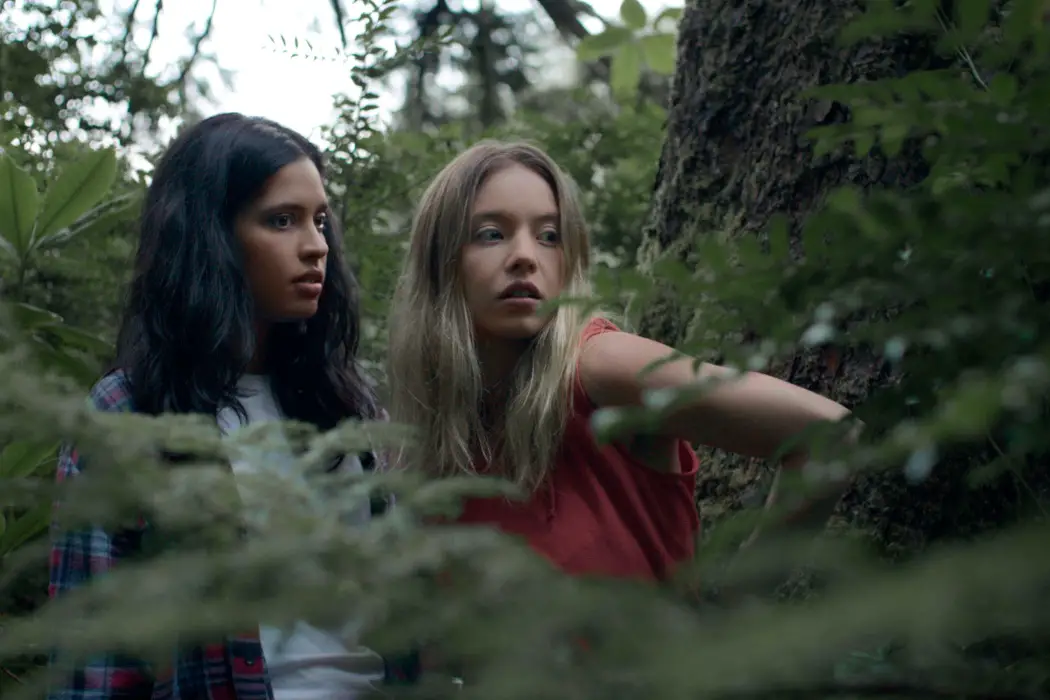CLEMENTINE: It’s More About How You Get There Than the Destination

Stephanie Archer is 39 year old film fanatic living in…
“I’ve never broken anyone’s heart.” Spoken as one of the first lines of the film, this line will resonate throughout the entirety of Clementine. There is a knowledge it creates for where the film is going, yet a mystery as it all unravels.
Clementine, from director Lara Gallagher, is a slow, evenly paced film that speaks volumes about its characters, while giving its audience time to fall into its world of relationships, connectivity, loss and love.
The Journey
Heartbreak is never easy to overcome, something we have all experienced at one time or another in our lives. Clementine opens to a warming display of love, only to quickly be thrown into Karen’s (Otmara Marrero) heartbreaking reality. Her lover D. (Sonya Walger) has broken her heart, leaving Karen to struggle with finding her footing and abruptly removing anything that they once shared from her life. Alone, with nowhere to go, Karen decides the best course of action is to head up to D’s old lake house, hiding out until she can find the strength to move forward.
Her anonymity is quickly compromised when she discovers the lake house has another uninvited guest. As Karen comes to know more about Lana (Sydney Sweeney), she begins to form a new relationship, reopening herself to the possibility of love – but also heartbreak.
“It’s more about the process, than the result”
Clementine is a film not only about the process of re-establishing our footing, but also about the desire humans have for relationships – for connectivity. We are willing to believe what we know to be false – to ignore our inner alarms, ignore the warning signs – all for the sack of connecting with someone. The need, even in our darkest days, never ebbs or wanes.

While Clementine asks us to examine the characters it encompasses, it also asks us to examine ourselves – our desires. Watching this during the global pandemic only heightened this awareness of our need for connectivity and relationships, driving home even harder the effectivity of the film.
Clementine does not only find success on the effectiveness of its messages, but also on the backs of its cast. Otmara Marrero brings a deep vulnerability to Karen, one which is relatable and irresistible. Her quiet, reserved and pensive nature she imbues her character with will draw an audience in, her inability to move forward, yet desire too, bringing a character study to life before our eyes. Sydney Sweeney as Lana matches the performance of Marrero, bringing the depth of mystery and the unknown that surrounds her character to full fruition. Both deliver engaging and stand out performances, elevating everything around them.
There is also a quiet tension that builds in Clementine, one viewers will find they are not aware has been building until the arrival of Bow (Will Brittain) at the lake house. The tension, however, is not in the hoping or anticipation of characters but rather in the unpredictability of behaviors. Lana is mysterious, creating a deep well of the unknown, while Karen is starved to reconnect, to find connection again with another person. With the arrival of Bow, the tension between the women is now encircled within his watchful eye – Bow bringing his own mystery to be unraveled.
Imagery as an artists paintbrush
Where story, setting and performance can bring immense success and structure to a film, clever and careful use of imagery can elevate it that much further. Clementine utilizes imagery with a skilled hand, each subtle yet poignant to the film and its audience.

Cracks in the walls in the first half of the film reflect not only the broken heart of Karen, but the cracks in the foundation of trust and the reliability of relationships. Karen’s life has been fractured by the abrupt departure of her love. If she does not give herself the time to process and mend, the crack will only get larger. Yet, if she goes through the motions, she can heal the crack, and maybe even become stronger.
Another constant element within Clementine is the ringing of the lake house telephone. Initially, it represents a reminder to Karen of the reality that still exists beyond the confines of the lake house. Where, even though she is hiding from the world, the world is still out there. Yet, the phone morphs as the film continues, becoming an outreaching arm of connectivity and even a mechanism of release.
One of the most powerful forms of imagery and meaning in the film was the constant return to the idea of Karen getting her dog back from her ex. While a seemingly predictable part of a break-up, there is so much more behind the need to keep Ramsey in her life. Karen not only loves her dog, he is the only remaining connection to her ex. But Ramsey also represents the need we humans have for unconditional love – which only a dog can truly manifest. At a time when her trust in connectivity and relationships is cracked and broken, the bond with her dog is still in its purest and unrelenting form. The happiness of Ramsey when he sees her in the beginning and the distress of separation clearly weighs on Karen – and seems to be the final straw that pushes her to escape reality.
Conclusion: Clementine
It is clear to see why Clementine was a selection at last year’s Tribeca Film Festival. Well-made and brilliantly crafted, Clementine will speak to a variety of audiences, giving messages of not only understanding, but hope.
Have you had the chance to see Clementine? What did you think? Let us know in the comments below!
Clementine will be released in virtual cinemas on May 8, 2020.
Does content like this matter to you?
Become a Member and support film journalism. Unlock access to all of Film Inquiry`s great articles. Join a community of like-minded readers who are passionate about cinema - get access to our private members Network, give back to independent filmmakers, and more.













